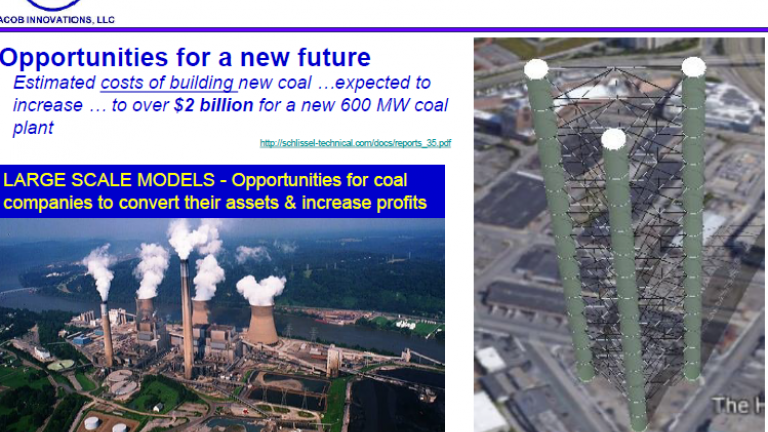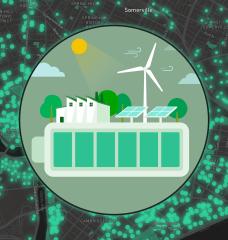
Climate CoLab “Commercial and Industrial Energy Efficiency 2018” contest winners Emil Jacob, Alex Sludds, and Timothy Robertson have developed a pitch for vertical axis windmill towers--to be built in and for urban spaces. The idea is to bring wind power closer to those using the energy; and allow it to be installed in a space conscious way. Traditional windmills, due to their size and shape, cannot feasibly be installed in cities. Conversely, vertical axis windmills, with dynamic shutters, blend seamlessly with an urban environment, and allow city residents to utilize the energy produced.
The windmills designed by Jacob, Sludds, and Robertson resemble towers, and have spinning “wings”. The wings are designed to capture wind power. These dynamic shutters also open and close when needed to respond to resistance issues within the turbine. There are also “vertical blinds” on the windmill towers, that run on the y-axis of the windmill. These blinds prevent birds from flying into the turbines; a significant problem with traditional windmills.
In describing his inspiration for the proposal, Jacobs states “I researched the history of designs for vertical axis windmills, and tried to understand why they are not widely developed to date…From here I experimented with a variety of designs until I arrived to the model submitted to Climate CoLab”. Jacob is the owner and founder of Jacob Innovations LLC, and collaborated with MIT engineers Tim Robertson and Alex Sludds to develop the vertical axis windmill model. Jacob describes himself as “a strong believer in simple solutions to overwhelming challenges, most importantly climate change.” In developing the vertical axis windmill tower, it was the hope that pragmatic and effective design would integrate with an urban space’s demand—allowing for an essential need to be met.
The proposal outlines the installation and implementation of these windmills. Initially, prototype models can be installed in areas such as highway intersections, that are not being utilized. The model for the windmill can be adapted at variety of scales, and can be installed in a number of urban spaces such as sidewalks, rooftops, and unused space. Initially, these actions would be taken in the United States, but Jacob, Sludds, and Robertson hope to see these windmills installed in China, India, Indonesia, and Mexico as the project gains traction. Jacob, Sludds, and Robertson estimate that fossil fuel usage could be eliminated entirely through a combination of vertical axis windmills and solar power. Their proposal states that a few hundred windmills could power the entire Metro Boston area. According to their research, a single powerful, vertical axis windmill could power up to 8,000 homes.
In the research and proposal writing process, Jacob states: ”In the process of answering questions and making the case for why this model is more efficient than other vertical axis windmill designs to date, I found additional solutions, and also learned how to best present an idea. The experience of participating in Climate CoLab has taught me valuable lessons on bridging the gap between what is presented and what is perceived when making the case for a design concept that is meant to bring change.” The team presented their proposal at the Horizon18 Summit—which took place in Boston, MA this past week-- and are grateful for the exposure and feedback they have received for their project through Climate CoLab.






